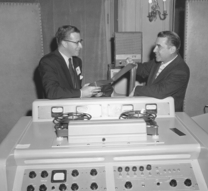- Home
- TV History
- Network Studios History
- Cameras
- Archives
- Viewseum
- About / Comments
Skip to content


















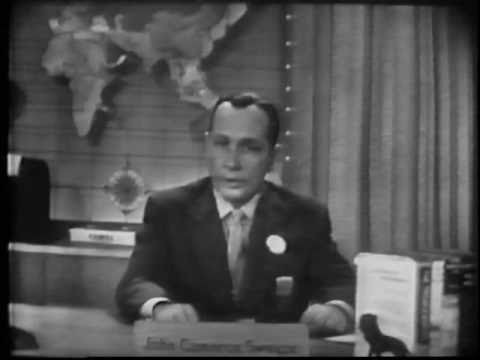

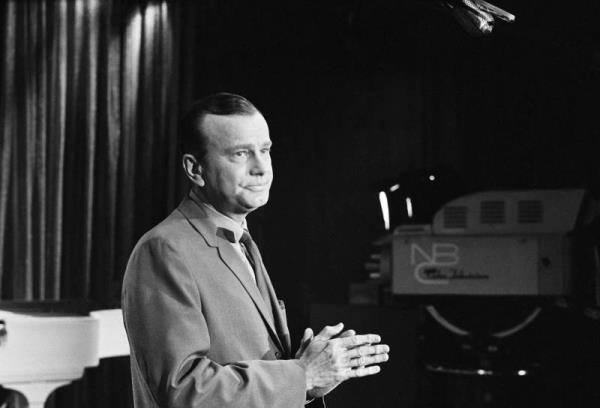



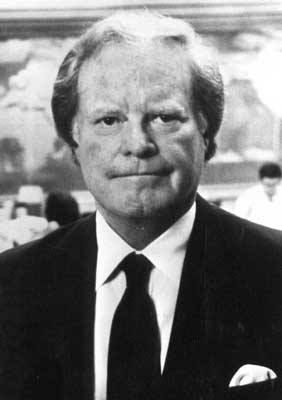





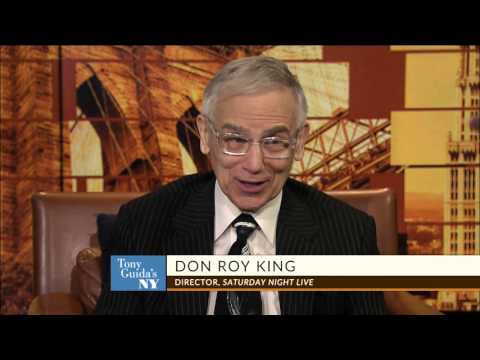

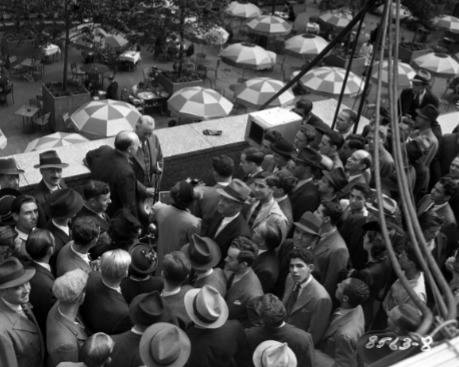



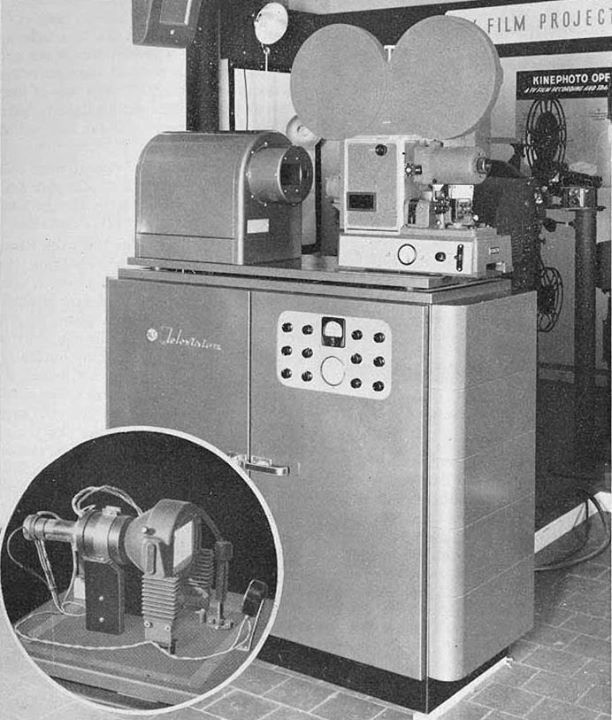

Posts in Category: TV History
Page 15 of 136
« Previous
1
2
3
4
5
6
7
8
9
10
11
12
13
14
15
16
17
18
19
20
21
22
23
24
25
26
27
28
29
30
31
32
33
34
35
36
37
38
39
40
41
42
43
44
45
46
47
48
49
50
51
52
53
54
55
56
57
58
59
60
61
62
63
64
65
66
67
68
69
70
71
72
73
74
75
76
77
78
79
80
81
82
83
84
85
86
87
88
89
90
91
92
93
94
95
96
97
98
99
100
101
102
103
104
105
106
107
108
109
110
111
112
113
114
115
116
117
118
119
120
121
122
123
124
125
126
127
128
129
130
131
132
133
134
135
136
Next » 

September 23, 1962…”The Jetsons” Debuts As First Color For ABC
On September 23, 2016
- TV History
September 23, 1962…”The Jetsons” Debuts As First Color For ABC
This video clip is quite good, as Bill Hanna and Joseph Barbera reminisce about the show.
Here’s a little known fact…although this was ABC’s first color broadcast, the network’s facilities did not include any color equipment anywhere, and only a few of their affiliates could broadcast color. So, how did “The Jetsons” run in color on ABC?
Each week, ABC took a 35 and 16MM copy (master and safety) to NBC Burbank on Sunday afternoons. NBC would rack both and play them simultaneously (in case the 35MM film broke) down two AT&T lines to ABC New York for the east coast broadcast. They would do the same later each Sunday when they fed the signal to ABC Hollywood.
“The Flintstones” was produced in color and preceded this show by two years, but those first couple of years were broadcast in black and white. When “The Jetsons” debuted in color, the next week the Bedrock bunch made their color debut too, which also included NBC Burbank.
ABC’s first color ability came in late 1964 when they installed an RCA color film chain in New York. The network’s first live color ability came the next year when The Hollywood Palace got 4 RCA TK41s. Enjoy and share! -Bobby Ellerbee
https://www.youtube.com/watch?v=1oDaHRbIDH8
A short documentary featuring the history of the Jetsons with rare commentary clips from Bill Hanna and Joe Barbera. This documentary is from the excellent J…
September 23, 1961…”NBC Saturday Night At The Movies” Debuts
On September 23, 2016
- TV History
September 23, 1961…”NBC Saturday Night At The Movies” Debuts
“How To Marry A Millionare” was the first movie to air, and with this debut, came a new problem…how to show widescreen movies on TV! Thus was born, Pan and Scan.
DOES ANYONE KNOW HOW PAN/SCAN WAS DONE?
Since many of these “new to TV” films were in formats like CinemaScope (including Millionaire), up to 45% of the film frame was not able to be seen on the 4:3 TV screens, so a Pan and Scan method was used, as there was not letterboxing back then.
My question is, who did this? Did the studios provide edited versions to NBC, or did NBC do this “one the fly” with a movable telecine camera during the broadcast? Below is the technique, but this doesn’t answer the question.
During the Pan and Scan process, an editor selects the parts of the original filmed composition that seem to be the focus of the shot and makes sure that these are copied (i.e. “scanned”). When the important action shifts to a new position in the frame, the operator moves the scanner to follow it, creating the effect of a “pan” shot. In a scene in which the focus does not gradually shift from one horizontal position to another—such as actors at each extreme engaging in rapid conversation with each other—the editor may choose to “cut” from one to the other rather than rapidly panning back and forth.
I would think that the studios would provide pan/scan versions, because this required a lot of effort and editing expertise, but I don’t know…how about you? I know we have a lot of great technicians from both TV and film here, so please enlighten us.
By the way, “How To Marry A Millionaire” (1953) was the first film shown on “NBC Saturday Night at the Movies”, which ran until 1978. This was the first television program to exclusively broadcast relatively recent theatrical films on US network television. Until the early ’70s, movie studios held film from television for about 7 or 8 years, and some, like “Ben Hur” were held out for 12 years. In the mid 70s, the hold out period got to about 3 or 4 years.
The idea proved so successful that NBC soon followed it up with another series with the identical format, “Monday Night at the Movies”, and it wasn’t long before the format was taken up by both CBS and ABC.
The first made for TV movies sprang from this place!
With the demand for movies increasing during the 1960s, made-for-television films would soon be created by NBC, along with some help from now-sister company Universal. The first, was “See How They Run”, directed by David Lowell Rich and starring John Forsythe and Senta Berger. It first aired on October 7, 1964 and ushered in a series of other TV-movies over the years, aired on NBC under the title “NBC World Premiere Movie”. -Bobby Ellerbee
A Tour Of The Ellerbee Camera Collection……
On September 22, 2016
- TV History
A Tour Of The Eyes Of A Generation Camera Museum…
Ellerbee Camera Collection…An Exclusive New Tour Video
Here is a tour of my museum quality collection of television cameras. This is the 16 that I have on display in the house, but there are 85 more in the garage and we get a glimpse of those at the end. Enjoy and Share! -Bobby Ellerbee


September 21, 1963…”The Jerry Lewis Show” Debuts On ABC
On September 21, 2016
- TV History
September 21, 1963…”The Jerry Lewis Show” Debuts On ABC
This is a strange tale, but you’ll love the video of Jerry riding the crane and singing.
You would have thought that one of the worlds top comedians would have been a natural hit, but the show only ran 13 weeks. ABC originally had high hopes for Lewis’ live, two-hour Saturday night variety series. They signed the comedian to a 5-year contract for a reported $35 million. The network also purchased the El Capitan Theater in Los Angeles and re-christened it The Jerry Lewis Theater, after spending over a million dollars to renovate and equip it with 4, RCA TK60 black and white cameras, and a new control room.
“The Jerry Lewis Show” premiered on September 21, 1963, but by Thanksgiving, it was apparent that the show was a failure. In a scramble for a mid season replacement, ABC hired Nick Vanoff to produce a new show. Vanoff, in turn, hired William O. Harbach to help him develop the series. They hurriedly came up with the concept of “The Hollywood Palace”.
The final “Jerry Lewis Show” aired on December 21, 1963, and The Hollywood Palace premiered on January 4, 1964. The Palace took over the first hour of Lewis’ old time slot. The second hour was given to the local affiliates for their own local and syndicated programming. The old El Capitan Theater was once again re-named, this time as “The Hollywood Palace.”
The video will start a segment from the Lewis show where he climbs aboard the crane to sing “Birth Of The Blues”. This is a rare clip, so enjoy! -Bobby Ellerbee
(Clip source: https://youtu.be/XtL4K9srXwQ?t=21
1)
September 21, 1948…Berle Becomes “Texaco Star Theater” Host
On September 21, 2016
- TV History
September 21, 1948…Berle Becomes “Texaco Star Theater” Host
This is an ultra rare photo of NBC’s newly converted Studio 6B, where “Texaco Start Theater” is about to go on the air. Berle hosted the debut show June 8, 1948, but over the summer, Henny Youngman, Morey Amsterdam, George Price, Jack Carter and Peter Donald rotated as host, before Berle “won the competition,”. He was made permanent host on September 21, and over the next three years, he, and this show were the biggest thing in television! Enjoy and share! -Bobby Ellerbee


September 21’s Moments In TV History…Many Major TV Debuts
On September 21, 2016
- TV History
September 21’s Moments In TV History…Many Major TV Debuts
1948 – Milton Berle debuted as the permanent host of “The Texaco Star Theater” on NBC.
1957 – The first episode of “Perry Mason” aired on CBS.
1968 – The television show “Adam-12” debuted on NBC.
1970 – “NFL Monday Night Football” made its debut on ABC-TV. The game was between the Cleveland Browns and the New York Jets. The Browns won 31-21.
1972 – ABC-TV debuted “In Concert.” Alice Cooper appeared in the first episode.
1993 – The first episode of “NYPD Blue” aired on ABC.
1998 – The first episode of “Will & Grace” aired on NBC.
1999 – HBO’s live music show, “Reverb,” debuted with performances by Alanis Morissette and Ever


September 20, 1962…”The Jack Paar Show” Debuts On NBC
On September 20, 2016
- TV History
September 20, 1962…”The Jack Paar Show” Debuts On NBC
When Jack Paar left the ‘Tonight’ show in the summer of 1962, he took a few months off, but returned to NBC in primetime with a weekly Friday night show.
Jack’s new show debuted on September 20, 1962, about two weeks before Carson’s “Tonight” debut. For the next three years, he owned the 10-11 ratings but ended the show in September of 1965. One of his favorite guests, on both shows, was Jonathan Winters. On this 1964 appearance, Paar told the audience to just watch what would happen when he gave Winters a simple stick as a prop. The rest is comedy history! Enjoy! -Bobby Ellerbee
http://www.youtube.com/watch?v=wwWDa1xPTPA
just a stick…. and woooooo there he goes…..
September 20, 1952…”The Jackie Gleason Show” Debuts On CBS
On September 20, 2016
- TV History
September 20, 1952…”The Jackie Gleason Show” Debuts On CBS
In July of 1950, Jackie Gleason took over as host of Dumont’s “Cavalcade Of Stars”. The original hosts had been Jack Carter, then Jerry Lester, who was followed by Morey Amsterdam.
By the middle of ’51, Gleason and his writing staff developed an idea for a sketch based on the popular radio show “The Bickersons”. After rejecting titles like “The Beast”, “The Lovers”, and “The Couple Next Door”, Gleason and his staff settled on “The Honeymooners” for the name of the new sketch.
The debut sketch on October 5, 1951 was six-minutes and the only two characters were Ralph Kramden and his wife, Alice, who was originally played by Pert Kelton, who in real life was nine years older than Gleason.
Due in part to the success of these sketches, “Cavalcade of Stars” became a huge success for DuMont, as the audience size quadrupled. Gleason’s contract with DuMont expired in the summer of 1952, and the financially struggling network was unable to re-sign him.
On September 20, 1952, “The Jackie Gleason Show” debuted from CBS Studio 50, or what is now known as The Ed Sullivan Theater. Although CBS was very generous with Gleason, they could not accommodate his wishes to bring Pert along to the new show.
Kelton’s husband had been labeled a communist and, by association, she too had wound up on the dreaded “Black List”. A new Alice had to be found, and Audrey Meadows went for an audition. Gleason had seen her as “Linda Lovely”, on “The Bob And Ray” show, and thought she was good, but too glamorous. Meadows heard about this and a few days later auditioned again under another name but this time, with no makeup and a dressed down look. The rest, as they say, is history.
Below is Meadows as Linda Lovely in 1950, and up top, we see Gleason in rehearsal of the opening with The June Taylor Dancers. The cameraman in the foreground is the legendary Pat McBride.


September 19, 1970…”The Mary Tyler Moore Show” Debuts
On September 19, 2016
- TV History
September 19, 1970…”The Mary Tyler Moore Show” Debuts
https://www.youtube.com/watch?v=qALx1IReGcE
At the link above, Mary Tyler Moore discusses the problems with the pilot, and there were many…it was the lowest scoring pilot ever tested at CBS.
Below is the first episode, the one that aired 46 years ago today, but when you watch it, the story just doesn’t seem dated does it? This is the episode that sets up everything and where she meets “Lou Grant” in the famous “you’ve got spunk” scene. Enjoy and share! -Bobby Ellerbee
https://www.youtube.com/watch?v=f0MWATBr6q4
See her full interview at http://emmytvlegends.org/interviews/people/mary-tyler-moore


September 19, 1952…This Was The News Of The Day On NBC
On September 19, 2016
- TV History
September 19, 1952…This Was The News Of The Day On NBC
Here is a 64 year old time capsule…a look at the news on this day in 1952. This is the full 15 minute broadcast of “The Camel News Caravan” live from Studio C of NBC’s Uptown Studios at 105 East 106th Street. A location NBC leased from Pathe, as they worked closely on film processing and kinescope production.
This live feed of John Cameron Swayze in Studio C, plus film inserts from Studio F at Uptown was sent to Master Control at 30 Rock via coaxial cable, and there, modern technology allowed live reports from Los Angeles, Washington and Chicago to be inserted. Since the coast to coast television linkage had only become possible the year before, this was still novel and quite impressive to viewers.
As you watch, you’ll notice that not much has changed! The democrats and republicans are butting heads over Nixon, and there are even a couple of fluff pieces here on fashion and portable swimming pools. Enjoy! -Bobby Ellerbee
https://www.youtube.com/watch?v=qK_3NBHJyBk
kinescope of a live network news broadcast. News items include Richard Nixon, Charlie Chaplin (at 13:14), fashion, missiles and more, plus original commercia…
September 19, 1960…The “Tonight” Show Goes Color
On September 19, 2016
- TV History
September 19, 1960…The “Tonight” Show Goes Color
The “Tonight” Show is a creation of the late Pat Weaver, and has been on the air since 1954. It is the longest currently-running regularly scheduled entertainment program in the United States, and the third longest-running show on NBC, after “Meet the Press” and “Today”.
When the show began it was broadcast live from The Hudson Theater, with Steve Allen as the host. Paar took over in ’57 and while still at The Hudson, on January 12, 1959, the show began to be videotaped for broadcast later the same day.
The first week of January 1960, the show was moved to NBC Studio 6B at 30 Rock in preparation for the switch to color, which came on September 19, 1960 during Jack Paar’s tenure as host.
NBC’s “Broadway Open House”, which began in 1950, first demonstrated the potential for late-night network programming. The format for The “Tonight” Show can be traced to a 40 minute late night local show on WNBT New York, which was hosted by Allen. That show started in 1953. Network president Pat Weaver saw it, liked Allen, and made a deal. Beginning in September 1954, it was renamed “Tonight” and shown on the full NBC network. -Bobby Ellerbee
September 18, 1927…The CBS Radio Network Debuted
On September 18, 2016
- TV History
September 18, 1927…The CBS Radio Network Debuted, In the photo above is CBS News Studio 9 with Murrow in suit and the short man in the background is news director Paul White. On the right, Douglas Edwards looking at wire copy. Below is Studio 9 with Robert Trout looking to news director Paul White for a cue in 1939.
Above is Studio 1 during 1932 election coverage and below is Studio 2 after the update in the early 40s
The two photos above show Studio 3 during an episode of “Gang Busters” and again after the remodeling in the 40s.
July 25, 1964…CBS Radio Bids Farewell To 485 Madison Avenue
On September 18, 1927, the CBS Radio Network, with 18 affiliates went on the air from their studios in The Steinway Building near Carnegie Hall on West 57th Street.
Exactly two years later, CBS Radio moved into the new 485 Madison Avenue building on September 18, 1929.
On July 25, 1964, the last broadcast from the heart of CBS Radio News…Studio 9, was a hosted by Steve Rowan, and the next day, Rowan was the first to broadcast from the new CBS Broadcast Center. At this link is the 2 page CBS press release. http://donswaim.com/cbs-radio-moves-1964.pdf
That last show from 485 Madison, “Farewell To Studio 9” was historic in every way, and included clips from the many world shaping newscasts, and the most iconic newscasters this country
has known, including Edward R. Murrow, and many more that you can hear at this link to that last show.
http://www.oldtimeradiodownloads.com/historical/farewell-to-studio-9/farewell-to-studio-9-19xx-xx-xx
Some Interesting History: When 485 Madison Avenue was first built, CBS occupied only the upper floors. As need grew, CBS expanded throughout the building. Originally, there were six studios.
Studios 1, 2, and 6 were on the 22nd floor. Studio 1 was reached by a staircase as its floor was higher in order to accommodate the higher ceilings of Studios 3 and 5 which were directly underneath.
Studios 3, 5, and 4 were located on the 21st floor. Master Control and the upper part of Studio 1 occupied the 23rd floor.
Studios 1 to 6 were remodeled in the mid 30s reflecting acoustic enhancements unknown when first built. Suspended light fixtures became recessed, sound insulation, wooden panels, and rubberized flooring were among the improvements. Also in the mid 30s, Studios 7 and 8 were constructed on the 3rd floor of 485 Madison Avenue.
Studio 9, which was the news studio and the news department were located on the 17th floor. CBS also had radio studios at 49 East 52nd Street, just around the corner from 485 Madison.
CBS television studios were also in the process of moving to the Broadcast Center including 41 through 44 at Grand Central. Studios 53 to 56 at Liederkrantz Hall, 111 East 58th Street were also moving to the Broadcast Center. The corporate offices later moved from 485 to Black Rock which opened in 1965 at 51 West 52nd Street. Happy Birthday to the CBS Broadcast Center! -Bobby Ellerbee
September 17, 1960…Roone Arledge Changes College Football Forever
On September 17, 2016
- TV History
September 17, 1960…Roone Arledge Changes College Football Forever
56 years ago today, The Georgia Bulldogs, lead by quarterback Fran Tarkenton, traveled to Legion Field in Birmingham to take on Coach Bear Bryant’s Crimson Tide. At 2:45 that afternoon, college football on television changed forever, as ABC broadcast the game.
That is where the ideas of a young Roone Arledge got put to the test. He had a different theory on how the game should be presented on TV, and was going to give fans something different.
With intimacy that was unprecedented, Arledge displayed the calm concentration of Bear Bryant on the sidelines before and important call, the youthful elation of Georgia QB Fran Tarkenton after scrambling for a first down, and the anguish of a Bulldog fan with a UGA pennant.
Several months before ABC began broadcasting NCAA college football games, Arledge sent his boss Ed Scherick a remarkable memo, filled with television production concepts which sports broadcasts have adhered to since. Previously, network sporting broadcasts had consisted of simple set-ups and focused on the game itself. The genius of Arledge in this memo was not that he offered another way to broadcast the game to the sports fan. The genius was to recognize television had to take the sports fan to the game.
In addition, Arledge realized that the broadcasts needed to attract and hold the attention of women viewers. At age 29, on September 17, 1960 he put his vision into reality with ABC’s first NCAA college football broadcast, and Roone’s future was on the line…along with the $6 Million ABC had spent for the rights to the season.
He had picked the right game and it was broadcast nation wide. He knew Bear Bryant was out to avenge the previous year’s humiliating season opener loss to UGA, and would draw a lot of interest. Roone had Curt Gowdy and Paul Christman in the booth, and he had told them both to “emphasize the the developing story of the game, the contrast of the Bryant team and the individual ability of Tarkenton”.
Arledge told the cameramen to focus on personalities driving the game, and the activity in the stands and on the sidelines as well…especially the cheerleaders. He wanted impact shots that showed “all the excitement, wonder, jubilation and despair that makes this America’s Number One sports spectacle”.
As a UGA grad, I’m sorry to report that Bama beat us that day. Enjoy, share and Go Dawgs! -Bobby Ellerbee
September 16, 1949…ABC’s KECA TV In Los Angeles Signs On
On September 16, 2016
- TV History
September 16, 1949…ABC’s KECA TV In Los Angeles Signs On
On May 7, 1949, Billboard revealed that ABC would spend $2.5 million to convert the old Vitagraph/Warner East Annex in Hollywood into The Prospect Studios, and construct a transmitter on Mount Wilson in anticipation of the launch of KECA-TV, which went on the air on September 16, 1949. In 1954, the call letters were changed to KABC.
When ABC began television operations on April 19, 1948, it had what CBS, Dumont and NBC did not have…5 major market, Owned and Operated stations. Well, almost…but they did have construction permits from the FCC, and over the next 13 months, they all came to air.
On April 19, 1948, the ABC Television Network began its broadcasts on its first primary affiliate, WFIL-TV in Philadelphia. In August 1948, the network’s flagship owned-and-operated station, WJZ-TV in New York City, began its broadcasts.
WENR-TV in Chicago launched on September 17, 1948, while WXYZ-TV in Detroit went on the air October 9, 1948. KGO-TV in San Francisco went on the air May 5, 1949. Happy Birthday KABC! -Bobby Ellerbee


September 16, 1965…”The Dean Martin Show” Debuts On NBC
On September 16, 2016
- TV History
September 16, 1965…”The Dean Martin Show” Debuts On NBC
This video goes to the heart of why the show was such a big success. It was as spontanious as a taped, network variety show could be, thanks to the unique relationship that Dean and director Greg Garrison had.
The great open secret of The Dean Martin Show was that Dean barely showed up for work. He did for its first season, but the program wasn’t working, and Dean was unhappy with how hard he was working. That was when Greg Garrison, who’d been hired as director only, came up with an idea. To make the show more spontaneous, and to keep Dino interested in doing it at all, he would arrange the schedule so Martin only had to come in one day a week, and not even for the entire day. Rehearsals were done with a stand-in, and everything that didn’t involve Dean was taped when he was nowhere on the premises. There were people who appeared on The Dean Martin Show without ever meeting Dean.
On tape day, Dean would come in, watch a run-through with the stand-in, then go out and replicate the stand-in’s actions. Everything was configured for maximum speed. Dean almost always wore a tuxedo, thereby minimizing costume changes and making it possible for any segment to be edited into any other show. The lines were all on cue cards and the songs, which were performed live, were all tunes that Dean already knew. If something went wrong, Garrison would usually not start over. He’d work some kind of paste-up edit, often inserting a freeze-frame in a manner that made other TV directors wince. Once in a while during a musical number, Dean wouldn’t be able to hear the orchestra and if you watch, you can see him rubbing his ear to signal Garrison to have the audio cranked up a notch. Anyone else would have restarted or edited…but Garrison promised his star he’d be done by 10 PM, and did whatever was necessary to make that happen.
In this particular segment, you’ll see everything you just read demonstrated, but given how this ends, this is one of the few times taping had to stop for a few minutes. Enjoy! -Bobby Ellerbee
https://www.youtube.com/watch?v=VLwHtOzq2M4
with Anna Moffo and Lloyd Bridges and Dean rips his pants LOL


Great Interview…Director, Don Roy King, “Saturday Night Live”
On September 16, 2016
- TV History
Great Interview…Director, Don Roy King, “Saturday Night Live”
In case you missed this link in the comments section of the SNL story earlier this week, here is a rare treat. In this half hour interview, Don Roy King gives us an incredibly detailed and interesting description of how the show is done, the weekly schedule, and the things that would reduce mere mortals to tears and panic in directing television’s only live 90 minute comedy sketch show.
With the best, and most experienced crews, actors and support staff in live television, they pull it off without a hitch, week after week and year after year, but as you will see…it’s not easy. They just make it look that way! Thanks to Andy Rose for the clip. Enjoy! -Bobby Ellerbee
September 15, 1938…NBC Debuts TV’s First Live Remote Show
On September 15, 2016
- TV History
September 15, 1938…NBC Debuts TV’s First Live Remote Show
On December 12, 1937, the world’s first electronic television remote units were delivered by RCA to NBC in New York City. The dual vehicle system, consisting two, 26 foot buses included one for production and one for transmission. The production bus provided two portable single-lens Iconoscope cameras and the support equipment. The transmission bus contained the 177 MHz transmitter with a 50 foot antenna which could relay a remote pickup to the Empire State Building from as far away as 25 miles.
The units were field tested for about six months before being returned to RCA’s Camden plant for modifications in the synchronizing equipment. Another modification was the installation of an coaxial feed out the transmitter truck, which allowed them to shoot at 30 Rock’s sunken ice skating rink.
The trucks came back in late August, and on September 15, 1938, W2XBS broadcast the first “Man On The Street” episode, by interviewing passers-by in Rockefeller Plaza (via the new coax). It is thought that the “Man On The Street” interviews were done once a week on W2XBS, up until the 1939 World’s Fair opened in New York.
In 1935, a “man on the street” show called “Vox Pop” came to NBC’s Blue radio network and is thought to be the inspiration for the W2XBS remotes. Although there were still very few sets in use, the 15 minute show was a good work out for the crews and trucks.
By the time the 1939 World’s Fair came to town, NBC had a lot of experience with the units and used them heavily at the Fair.
THE PHOTOS, up top is a shot taken just above the ice skating rink, an episode of the NBC/W2XBS “Man On The Street” series is done live with one camera on the ground, and the other on top of the truck. This photo is possibly the Sept 15, 1938 debut. Below is a photo of a monitor, shows NBC head of programming Warren Wade on the left and is speaking with an RCA salesman about the future of television. Wade is the man who gave the OK to Howdy Doody. These two are in the photo up top, and this is possibly on the debut show.
The “SNL” Stages Layout & 3 Time Lapse Videos…
On September 14, 2016
- TV History
A little further down are links to 3 great time lapse videos that show you how “active” Studio 8H is during each episode of “Saturday Night Live”, but we will start with a rare look at a stage map for the show.
If you have wondered how Studio 8H is arranged for the hive of action that happens in 90 minutes, here is the answer. Of course, the written in sketch names change from week to week, but the stage areas stay the same.
To acclimate you, the south wall is to the left (49th Street) and the north wall to the right (50th Street). The wall where homebase is, is the west wall on the 6th Avenue side. At the bottom is the area where the bleachers are, but they wrap around on the north and south wall sides too.
At the bottom, you see the opening between stages 5 and 4C…this is the tunnel under the bleachers that leads to the page desk area and the dressing rooms. As you’ll see in one of the videos, this is a very busy area at showtime too. By the way, stage 2 is where the musical guests always perform, with the SNL house band at homebase. Where you see the “Three Dog Night, Control Audio” written in, that is the retractable tongue where the opening monologue is done, as well as “Weekend Update”.
Notice that some sketches are stacked in front of others, and that scenery is “pealed off” as the show progresses. Having seen this done live, you would be amazed at how many stage hands are setting and striking scenes during the show. It is ballet at it’s best!
Here are the 3 video links of the time lapsed action in Studio 8H… home of the best of the best in live television. Enjoy and share! -Bobby Ellerbee
https://www.youtube.com/watch?v=i72I9NNTTM0 2014 Time Lapse
https://www.youtube.com/watch?v=PU8k2hoCr2w 2009 Time Lapse
https://www.youtube.com/watch?v=3oRRYJs-Ec0 Page Area Load In/Load Out
September 13, 1947…The RCA Kinescope Machine Debuts
On September 13, 2016
- TV History
September 13, 1947…The RCA Kinescope Machine Debuts
In association with Dumont, Kodak and RCA announced the developed a special film camera to shoot directly off a TV screen. This was the first “time shifting” technology to come to television. Nine years later, video tape would become the second.
Officially titled, the “Eastman Kodak Television Recording Camera”, a Kinescope recorder was basically a special 16mm film camera mounted in a large box aimed at a high quality monochrome video monitor. All things considered the Kinescope made high quality, and respectable TV recordings.
The Kinescope was quite the clever device. It’s film camera ran at a speed of 24 fps. Because the TV image repeated at 60 fields interlaced (30 fps) the film had to move intermittently between video frames and then be rock steady during exposure.
The pull-down period for the film frame was during the vertical interval of less than 2 mili seconds, which was something no mechanical contraption could do at the time.
Together, Dumont, RCA and Eastman Kodak found various ways around the problem by creating a novel shutter system that used an extra six frames of the 30 frame video signal to move the film. This action integrated the video half-images into what seemed like smooth 24 fps film pictures.
Of course, the kines were played back on air using film chains running at 24 fps, so the conversion to film was complete and seamless. Until videotape recorders made their debut, the Kinescope was the only way to transmit delayed television programs that were produced live.
Page 15 of 136
« Previous
1
2
3
4
5
6
7
8
9
10
11
12
13
14
15
16
17
18
19
20
21
22
23
24
25
26
27
28
29
30
31
32
33
34
35
36
37
38
39
40
41
42
43
44
45
46
47
48
49
50
51
52
53
54
55
56
57
58
59
60
61
62
63
64
65
66
67
68
69
70
71
72
73
74
75
76
77
78
79
80
81
82
83
84
85
86
87
88
89
90
91
92
93
94
95
96
97
98
99
100
101
102
103
104
105
106
107
108
109
110
111
112
113
114
115
116
117
118
119
120
121
122
123
124
125
126
127
128
129
130
131
132
133
134
135
136
Next » 